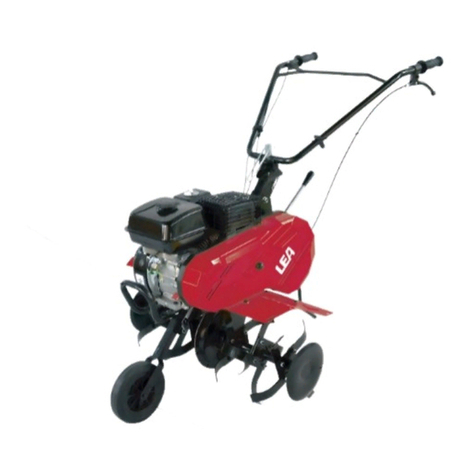
4
g) It is necessary reduction in power due to use in higher temperatures, altitudes and
humidity as below conditions.
1) Max Working Temperature: 40°C
2) Max altitudes: 1000 m
3) Max humidity: 95%
3). Operation
a) Do not operate the engine in a confined space where dangerous carbon monoxide
fumes can collect
b) Keep the machine free of oil, dirt and other impurities.
c) Please always place the appliance on even and stable surfaces.
d) Never operate the appliance inside buildings or in an environment without proper
ventilation. Pay attention to air flow and temperature.
e) Do not operate or store the appliance in wet or humid surroundings.
f) Ensure the sound absorber and air filter work properly. These parts serve as flame
protection in case of misfire.
g) To avoid possible burn injuries, do not touch the exhaust system or other parts that
become hot during operation. Pay attention to the warnings on the machine.
h) The engine must not be operated with excessive rotary speed. The operation of the
engine with excessive rotary speed raises the risk of injury. Parts which affect the rotary
speed must not be altered or replaced.
i) Regularly check for leakage or traces of abrasion in the fuel system, such as porous
pipes, loose or missing clamps and damage to the tank or tank cap. Before use all
defects must be repaired.
j) Work only in daylight or in good artificial light.
k) Never pick up or carry a machine while the engine is running
l) Stop the engine:
-whenever you leave the machine
-before refuelling
m) Before checking or adjusting the machine, the ignition plug and the ignition wire
respectively must be removed to prevent accidental starting.
4). Maintenance and storage
a) Keep all nuts and screws tight to be sure the equipment is in safe working condition.
b) Never store the equipment with petrol in the tank inside a building where fumes can
reach an open flame or spark.
c) Allow the engine to cool before storing in any enclosure.
d) To reduce the fire hazard, keep the engine, silencer and petrol storage area free of
vegetative material and excessive grease.
e) Replace worn or damaged parts for safety.
f) If the fuel tank has to be drained, this should be done outdoors.
g) Always clean and maintenance before storage.
h) Never disassembly the guards for cutting attachments.
i) Always store the metal blade in cool and dry place, never use rusted blade. It may cause




























